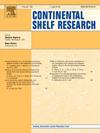Semi-enclosed coastal systems of South America: compilation and dynamic-based classification
IF 2.2
3区 地球科学
Q2 OCEANOGRAPHY
引用次数: 0
Abstract
Semi-enclosed coastal water systems (SECS) provide essential ecological and economic services. Their sustainable use requires a baseline understanding of the physical dynamics that control their water quality, morphology, and environmental stability. This paper aims to provide an overview of the current state of knowledge on the physical processes in SECS in South America, a megadiverse region that encompasses five of the largest river systems in the world. To achieve this goal, we compiled data from satellite imagery, geological and hydrological maps, and peer-reviewed literature. The information derived from these sources allowed comparisons among systems according to the level of understanding of their local hydrodynamics. Moreover, a recent dynamic classification was employed to identify the main physical forcings of those SECS with sufficient data. 898 SECS were identified in the continent, including deltas, alluvial estuaries, and coastal lagoons. A review of over 500 peer-reviewed publications revealed that 74 systems exhibited enough data to render a dynamic classification possible. In addition, 18 SECS stood out by the advanced understanding of their physical processes. The analysis presented here synthesizes the current understanding and provides an outlook of future challenges. We emphasize the need for continued monitoring of these systems to inform management strategies and mitigate the impacts of environmental stressors.
南美洲半封闭海岸系统:汇编和基于动态的分类
半封闭沿海水系(SECS)提供必要的生态和经济服务。它们的可持续利用需要对控制水质、形态和环境稳定性的物理动力学有基本的了解。本文旨在概述南美洲SECS物理过程的知识现状,南美洲是一个包含世界上最大的五个河流系统的超级多样化地区。为了实现这一目标,我们从卫星图像、地质和水文地图以及同行评议的文献中收集了数据。从这些来源获得的信息允许根据对其局部流体动力学的理解水平在系统之间进行比较。此外,采用最新的动态分类方法,在数据充足的情况下确定了这些SECS的主要物理强迫。在大陆上确定了898个SECS,包括三角洲、冲积河口和沿海泻湖。一项对500多份同行评议出版物的审查显示,74个系统展示了足够的数据,使动态分类成为可能。此外,18个SECS因其对物理过程的先进理解而脱颖而出。本文的分析综合了当前的认识,并展望了未来的挑战。我们强调需要持续监测这些系统,为管理策略提供信息,并减轻环境压力因素的影响。
本文章由计算机程序翻译,如有差异,请以英文原文为准。
求助全文
约1分钟内获得全文
求助全文
来源期刊

Continental Shelf Research
地学-海洋学
CiteScore
4.30
自引率
4.30%
发文量
136
审稿时长
6.1 months
期刊介绍:
Continental Shelf Research publishes articles dealing with the biological, chemical, geological and physical oceanography of the shallow marine environment, from coastal and estuarine waters out to the shelf break. The continental shelf is a critical environment within the land-ocean continuum, and many processes, functions and problems in the continental shelf are driven by terrestrial inputs transported through the rivers and estuaries to the coastal and continental shelf areas. Manuscripts that deal with these topics must make a clear link to the continental shelf. Examples of research areas include:
Physical sedimentology and geomorphology
Geochemistry of the coastal ocean (inorganic and organic)
Marine environment and anthropogenic effects
Interaction of physical dynamics with natural and manmade shoreline features
Benthic, phytoplankton and zooplankton ecology
Coastal water and sediment quality, and ecosystem health
Benthic-pelagic coupling (physical and biogeochemical)
Interactions between physical dynamics (waves, currents, mixing, etc.) and biogeochemical cycles
Estuarine, coastal and shelf sea modelling and process studies.
 求助内容:
求助内容: 应助结果提醒方式:
应助结果提醒方式:


